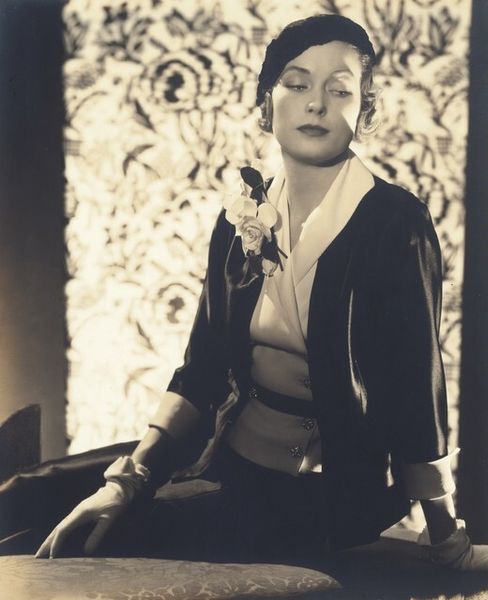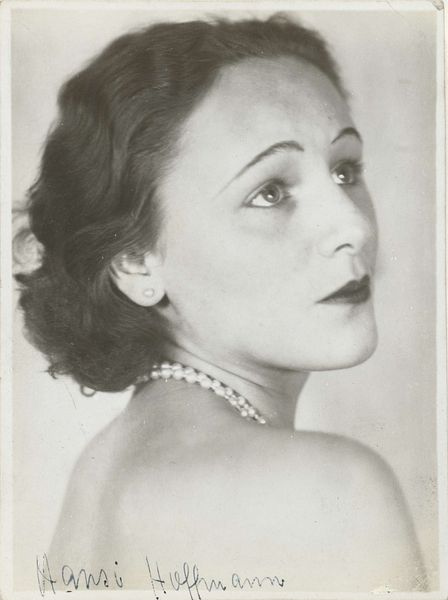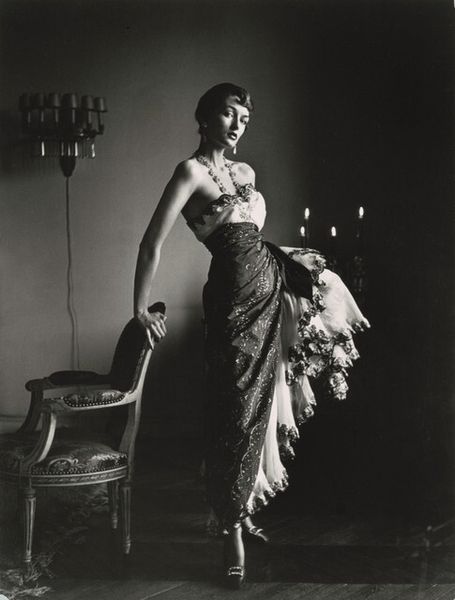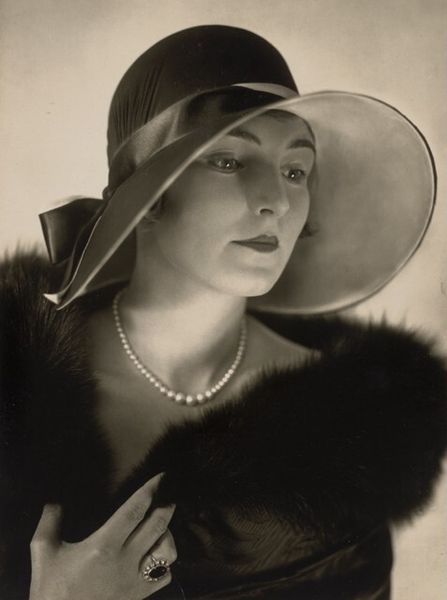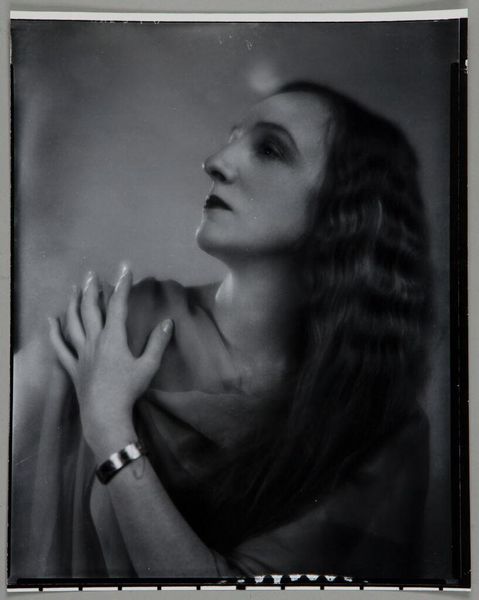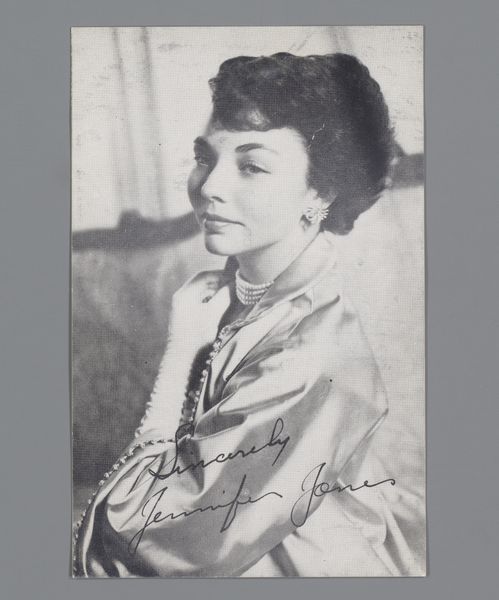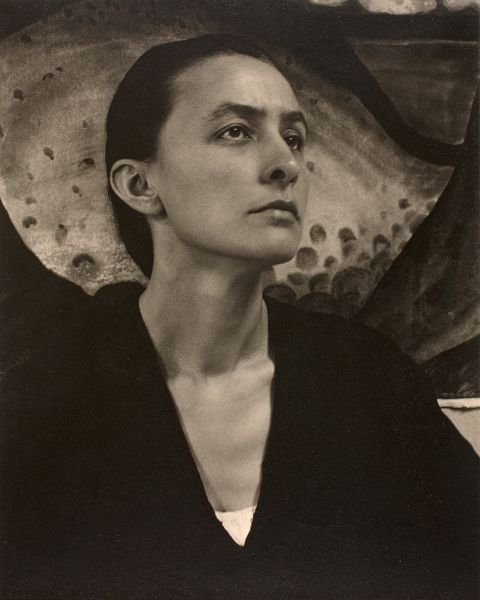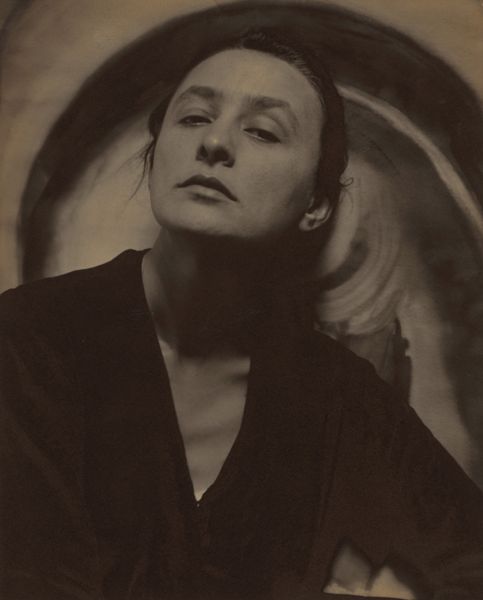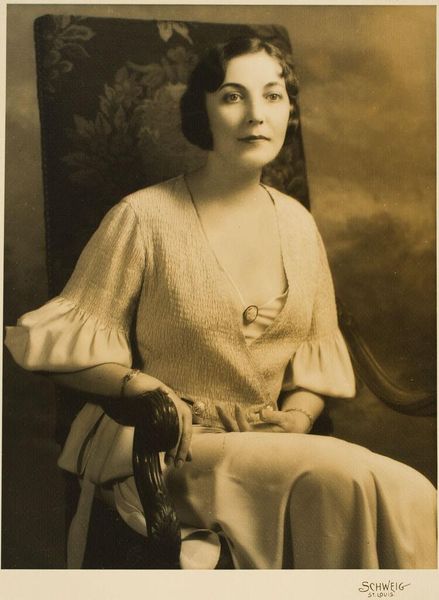
photography
#
portrait
#
photography
#
modernism
#
realism
Dimensions: image: 34.3 × 23.5 cm (13 1/2 × 9 1/4 in.)
Copyright: National Gallery of Art: CC0 1.0
Editor: This is "Spanish Fashions by Tina Leser, New York," a photograph by Gordon Parks from 1950. The detail in the jewelry is striking, particularly in contrast to the relatively plain background. What stands out to you in this portrait? Curator: The photograph functions less as a simple portrait and more as an advertisement—a visual signifier of specific modes of material consumption. Look at the textures: the layering of fabrics, beads, and metalwork. Consider what went into acquiring and combining these materials and how they relate to prevailing notions of class and style. Editor: So, it’s not just about a pretty picture; it's about what the picture *means* in terms of materials? Curator: Precisely. These items, and the way they are presented, represent a system. Who made those necklaces? Where were the textiles sourced? We have to ask how labor and materials intersect here. Was it Spanish in origin, as the title suggests? What constitutes "Spanish fashion" in New York? It begs the question about cultural appropriation. Editor: That’s interesting; I was focusing solely on the aesthetic appeal. What’s your take on the contrast of realism versus modernism that some have ascribed to the photograph? Curator: “Realism” here, is in name only—these types of photos construct a curated, commercial view of reality. The angle is flattering, the lighting enhances the clothing...and that enhances the appeal to the targeted market. And as for Modernism, it challenged prior methods, with new technologies that altered existing artistic expression as well as existing commodity marketing and messaging strategies. It would be more apt to classify this image within the existing social climate it intends to participate. The photograph documents and perpetuates established material and production hierarchies of its time, perhaps even critiquing it—depending on one’s reading. Editor: I see. I never considered the materials and their sources in that light. It changes how I look at it completely. Curator: Exactly! Art isn't divorced from its means of production. Considering the "how" and "why" reframes the entire dialogue, from creator, all the way to consumer.
Comments
No comments
Be the first to comment and join the conversation on the ultimate creative platform.

